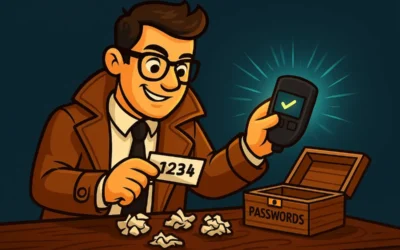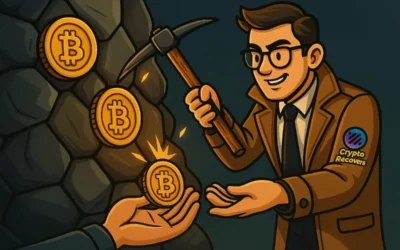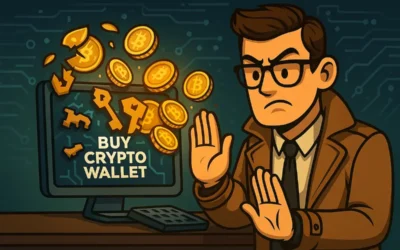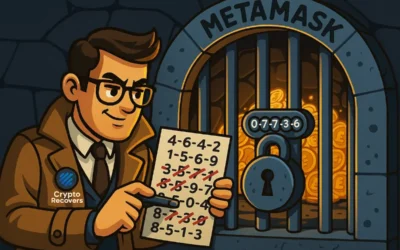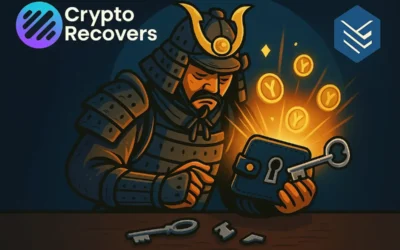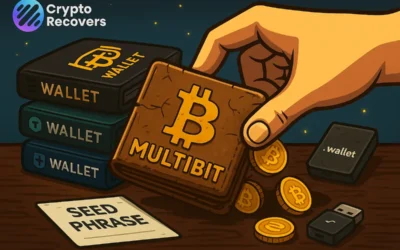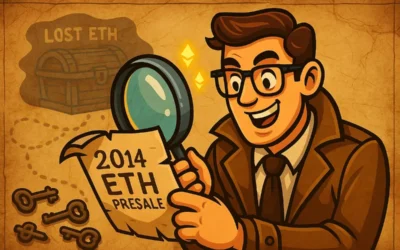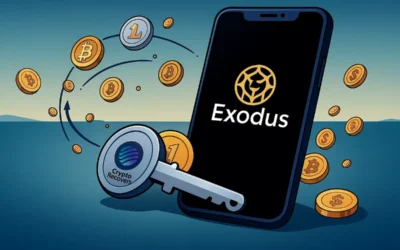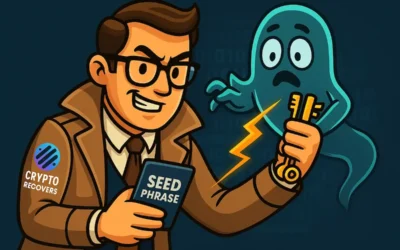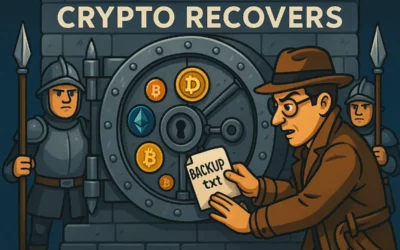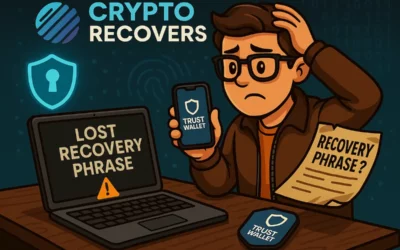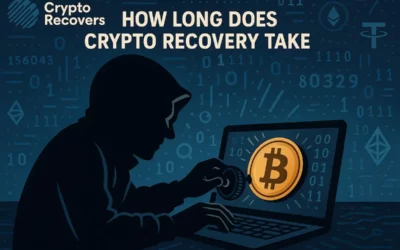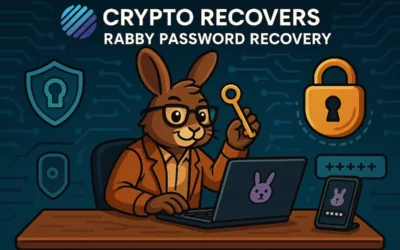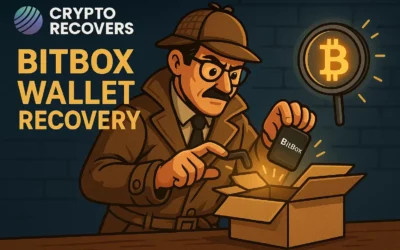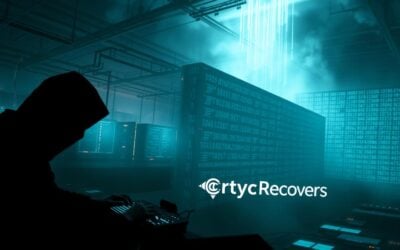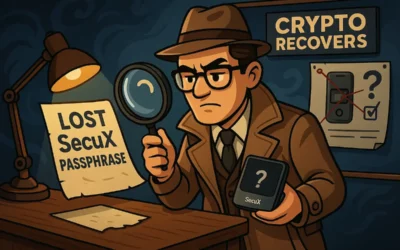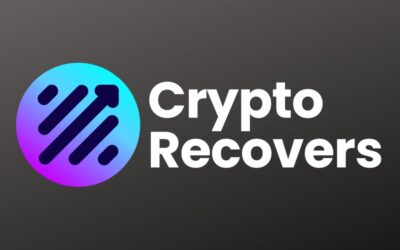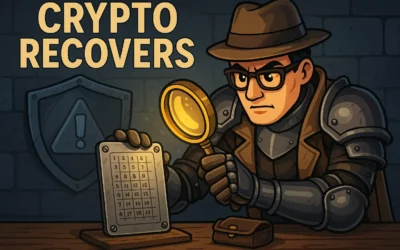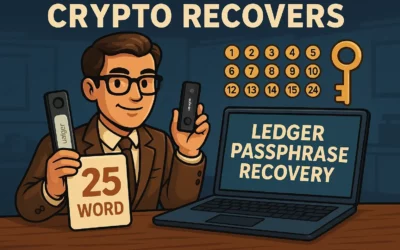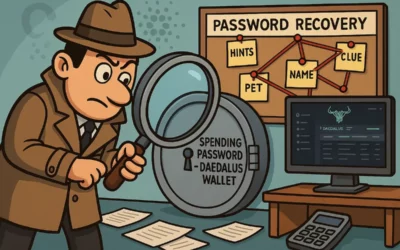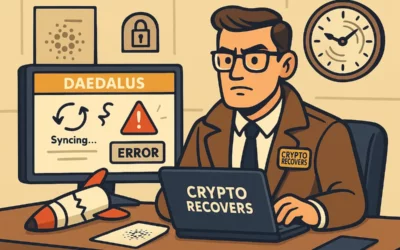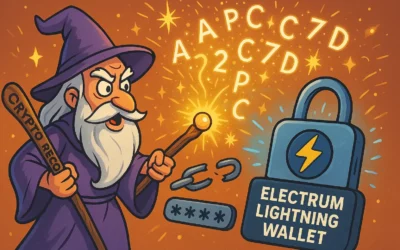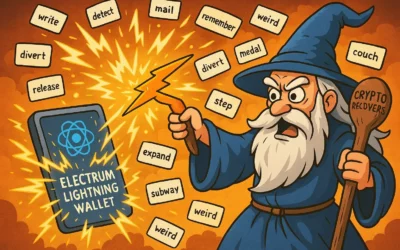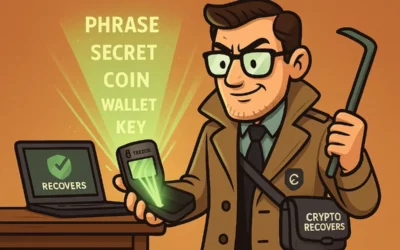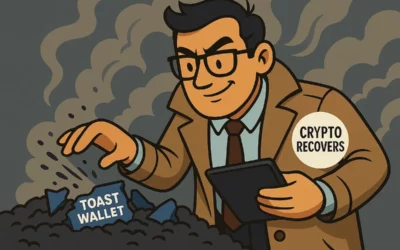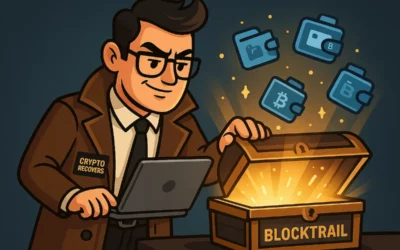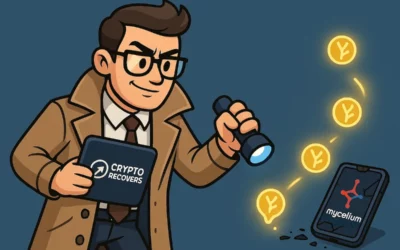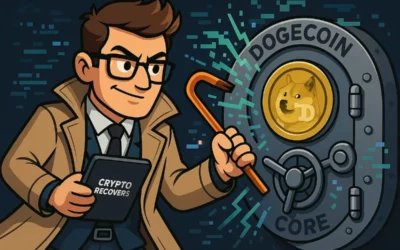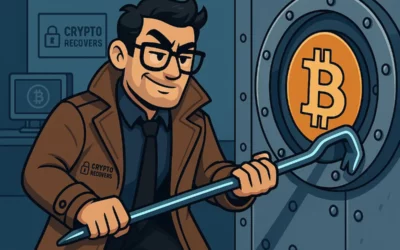Recover your Trezor passphrase and regain access to your hidden crypto wallet.
Meet
Robbert Bink

Robbert Bink
Founder & CEO
Lost Access? How to Recover Your Bitcoin Wallet Safely in 2025
Unlock your Bitcoin wallet and reclaim your crypto. Our easy-to-follow instructions help you recover your lost wallet in no time.
Recovering Bitcoins Lost for Years: Crypto Wallet Success Story
Recover your crypto wallet with our proven success story. Discover how to regain access to your digital assets.
Crypto Wallet for Sale Scams: Don’t Buy Wallets With a Balance
Beware of crypto wallet scams! Discover why you should never purchase a wallet with a pre-loaded balance. Important security advice.
Forgot MetaMask Password? Reset & Recover the Password
Forgot your MetaMask password? Learn how to reset and recover your MetaMask wallet, even without the seed phrase.
How to Reset & Recover Yoroi Wallet Spending Password in 2025
Recover your Yoroi wallet spending password with this step-by-step guide. Learn how to regain access to your crypto assets.
Everything About the Old MultiBit Wallet (2025 Edition)
Multibit wallet discontinued? Discover a trusted alternative to safeguard your cryptocurrency and recover your funds.
Recover Your Ethereum Presale: Access ETH Wallet in 2025
Need help accessing your Ethereum presale wallet? Discover how to recover your ETH presale funds.
What Happens if Your Hardware Wallet Breaks or Gets Lost?
Hardware wallet issues? Don’t panic – our guide explains what happens if your crypto wallet breaks and how to recover.
BRD / BreadWallet Shut Down? & How to Recover It in 2025
Explore your options for recovering your Bread Wallet (BRD) after the shutdown. Get step-by-step guidance on bread wallet recovery.
Exodus Wallet: How to Setup, Backup & Restore
Your complete guide to the Exodus Wallet: Learn how to set up, use, and secure your digital assets.
How to Recover Phantom Wallet (Even If You Lost Your Seed)
Recover your lost Phantom wallet with this step-by-step guide. Learn how to regain access and secure your crypto assets.
How to Restore Guarda Crypto Wallet & Troubleshoot Issues
Easily restore your Guarda Wallet and resolve technical difficulties with our comprehensive guide.
BIP39 Wordlist
Understand the BIP39 word list, the 2048-word seed phrase that secures your cryptocurrency wallet. Discover this essential component of digital asset management.
Professional Crypto Recovery: Behind the Scenes
We understand that many people come to us feeling panicked, stressed, and overwhelmed after losing access to their crypto wallets. It’s a vulnerable moment — and the potential reward of funds recovery can make it even more emotionally intense. But the first and most...
Trust Wallet Lost Recovery Phrase: What Can You Do?
Recover your lost Trust Wallet recovery phrase with Crypto Recovers. We can help you regain access to your crypto assets.
How to Find Legitimate Crypto Recovery Company & Avoid Scams
Identify legitimate crypto recovery companies and protect your digital assets. Learn how to spot scams and recover lost or stolen crypto.
How Long Does Crypto Recovery Take? Expert Insights
Discover how long crypto recovery takes with expert insights in this informative article.
Forgot Rabby Wallet Password? How to Cange it & Recover
Forgot your Rabby Wallet password? Learn how to change and recover it with our step-by-step guide.
Coinbase Wallet Recovery Guide: Restore Access with or Without Seed Phrase
Lost or hacked Coinbase wallet? Recovery phrase not working? ⚡ Learn how to restore your wallet, reset or recover Сoinbase without seed in this guide. Losing access to your cryptocurrency wallet can be a stressful experience. At Crypto Recovers, we understand the...
Keepkey Wallet Recovery: How to Restore or Backup Your Hardware Wallet
Lost access to your Keepkey wallet? Learn how to restore your Keepkey wallet quickly and easily with our simple guide to get your funds back fast! At Crypto Recovers, we understand that securing your digital assets is paramount. That's why we've created this in-depth...
BitBox & BitBox02 Recovery: Backup, Seed Phrase, Lost Password
Recover your lost BitBox01 or BitBox02 wallet with our step-by-step guide. Fix issues with passwords, seed phrases, and damaged SD cards.
What is a Brute Force Attack?
Explore the dangers of brute force attacks and learn how to protect your systems. Discover effective countermeasures against this common cybersecurity threat.
Lost SecuX Passphrase? Access Your Hidden Wallet
Recover your SecuX wallet if you’ve lost the passphrase – learn about solutions and alternatives.
What is BIP39 Wordlist?
BIP39 stands for Bitcoin Improvement Proposal 39. It’s a standard that defines how wallet software should generate and use a list of easy-to-remember words (called a mnemonic phrase) to create a secure and recoverable private key. In simple terms: These words = your...
Armory Wallet Recovery: Fixing Common Issues
Recover your lost Armory wallet with our expert help. We handle forgotten passwords, deleted/corrupted files, missing keys, and more.
Lost or Forgotten Ledger Passphrase: Recover Your Hidden Wallet
Forgotten your Ledger passphrase? Our guide shows you how to recover access to your crypto holdings.
Full Guide on Recovering Wasabi Wallet
Recover your Wasabi wallet with our comprehensive guide. Includes wallet recovery, password recovery, passphrase recovery, and more. Protect your privacy with Wasabi’s features.
Forgot Your Daedalus Wallet Spending Password: How to Recover it
Recover your forgotten Daedalus wallet spending password with our easy-to-follow guide. Learn how to regain access to your crypto assets.
Daedalus Wallet Recovery: Fix Not Syncing & Crash Problems
Daedalus wallet not syncing or crashing? Discover effective recovery methods to fix your wallet and regain access to your cryptocurrency.
How to Recover MetaMask Wallet – Full Troubleshooting Guide
Recover your lost MetaMask wallet in 2025 with our comprehensive troubleshooting guide. Learn how to access your crypto assets and protect your digital identity.
Forgot Electrum Password? How to Set It Up, Reset & Recover
Need help recovering your Electrum wallet password? Our step-by-step guide shows you how to restore access to your lost Electrum account.
Electrum Wallet Recovery: How to Restore It With & Wthout Seed
Recover your Electrum wallet by restoring it from your seed. Learn how to recover and restore your Electrum wallet in this step-by-step guide.
What is a Seed Phrase / Recovery Phrase?
Explore the meaning and importance of a seed phrase (or recovery phrase) for your cryptocurrency wallet. Learn how to properly store and protect this critical piece of information.
Recover Trezor Seed Phrase: Fixing Lost & Invalid Backup Issues
Recover your Trezor seed phrase: Unlock your crypto wallet and fix common backup problems. Get step-by-step tips to secure your digital assets.
Ledger Seed Phrase Recovery: What to Do if It’s Lost or Forgotten
Recover your Ledger wallet with the recovery phrase. Follow our simple instructions to restore your cryptocurrency assets.
Toast Wallet Recovery: How to Restore in 2025
Recover your lost or inaccessible Toast wallet with Crypto Recovers’ expert guidance. Learn the step-by-step process to regain access.
BTC.com Blocktrail Wallet Recovery – How to Restore in 2025
Recover your lost BTC.com wallet funds with professional assistance. Learn steps to recover your cryptocurrency and avoid common BTC.com recovery problems.
How to Recover MyCelium Wallet & Get Your Bitcoins Back
Unlock your Mycelium wallet: Comprehensive guide to recovering lost passwords and restoring access to your crypto assets.
How to Recover Ether.li Wallet: Step-by-Step Ethereum Recovery Guide
Learn how to Recover Ether.li Wallet with our comprehensive guide. Get expert tips and step-by-step instructions to regain access to your Ethereum funds securely and efficiently.
Recover Dogecoin Core Wallet – Password, Passphrase & Private Key Recovery
Unlock your digital currency with ease: Get essential tips to recover your lost password for Dogecoin Core wallet securely and efficiently.
Cannot Open Bitcoin Wallet: How to Unlock Your BTC Wallet
Encountering issues when you cannot open bitcoin wallet? Discover step-by-step solutions to regain access, recover your funds, and troubleshoot common wallet problems.
How to Find Your Lost Bitcoin Wallet & Recover it in 2025
Discover expert tips to find lost bitcoin wallet from a professional Crypto Recovery Service. Learn effective methods to recover your digital assets safely.
What is a Flash Loan?
Discover how flash loans in crypto enable instant borrowing without collateral. Learn about their uses, risks, and impact on decentralized finance.
What is Gas Fee?
Discover what gas fees are in cryptocurrency, how they impact transactions, and why they’re crucial for blockchain networks. Learn to optimize your crypto costs.
What is a Decentralized Autonomous Organization (DAO)?
Discover what a Decentralized Autonomous Organization (DAO) is and how it revolutionizes decision-making in blockchain-based communities and projects.
What is a Wrapped Token?
Discover what wrapped tokens are, how they work, and their role in blockchain interoperability. Learn about the benefits and uses of Wrapped Tokens in DeFi.
What is Sharding in Blockchain?
Discover how sharding in blockchain enhances scalability and performance. Learn about its benefits, challenges, and implementation in various blockchain networks.
What is a Liquidity Provider (LP) Token?
Discover what Liquidity Provider (LP) Tokens are, how they work in DeFi platforms, and why they’re crucial for providing liquidity in decentralized exchanges.
What is a Meme Coin?
Discover what crypto meme coins are, their popularity, and risks. Learn about famous examples like Dogecoin and Shiba Inu in the world of digital currencies.

